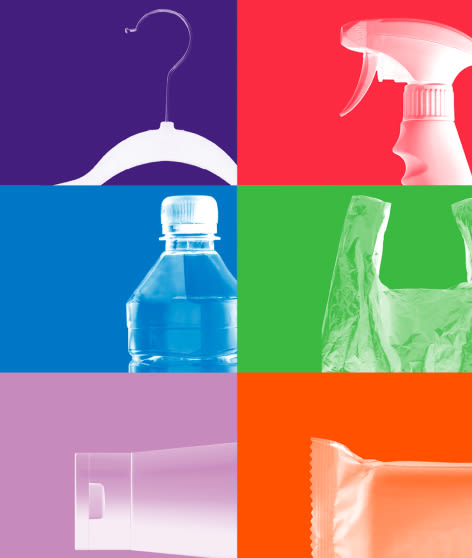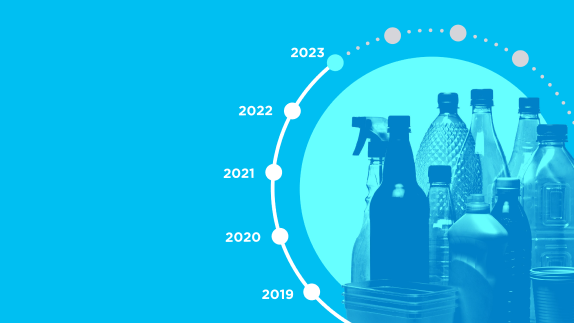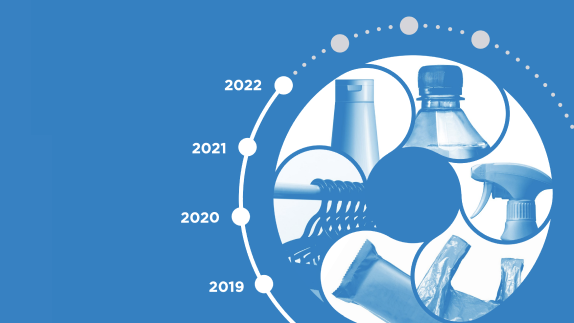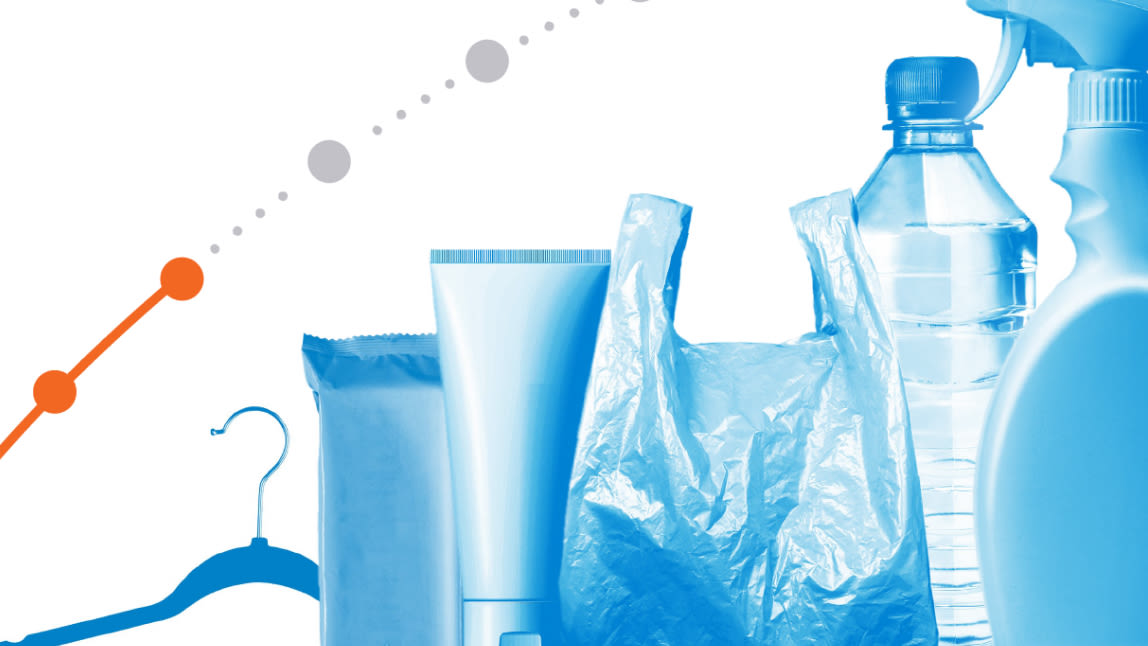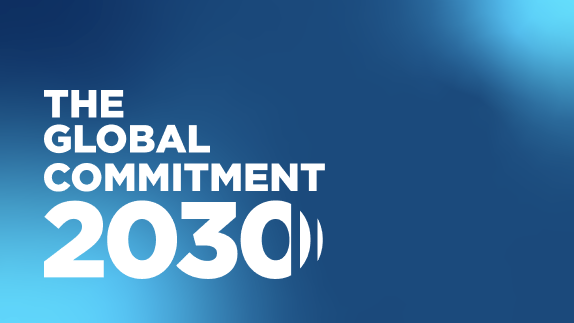Published as part of the Global Commitment Progress Report 2022 by the Ellen MacArthur Foundation and UN Environment Programme
Overall trends
The majority (64%) of food signatories increased their virgin plastic packaging, resulting in a 4% increase for the sector. The strong increase in virgin plastic use is predominantly driven by a growth in plastic packaging use resulting from increased sales, partly attributable to the COVID-19 pandemic rebound effect. Overall, looking at the period 2018 to 2021, the use of virgin plastic packaging slightly decreased by 1.1% as a result of an increase in post-consumer recycled (PCR) content, which has almost doubled since 2018 (6.2% vs 2.5%) yet remains the lowest compared to other sectors.
While food signatories are taking actions to improve the design of their packaging for recycling, progress on direct elimination and reuse models is still lacking. Similar to last year, signatories reported eliminating plastic materials such as PS, PVC, or multilayer materials to improve the design of their packaging for recycling. However, there is little evidence of fundamental changes to the packaging, product, or business model to eliminate the need for single-use packaging. Beyond reusereuseThe repeated use of a product or component for its intended purpose without significant modification. pilots implemented by some food signatories, the sector has the lowest share of reusable plastic packaging (0.4% on average) compared to other sectors.
Actions to accelerate progress
Increased emphasis is needed to reduce the amount of single-use packaging, and further increase the proportion of PCR content. Consumer-facing flexible packaging, including pouches and wrappers, represents a relatively high share of food signatories’ product portfolios compared to other sectors (40% on average vs 23% for all brand and retail signatories). Therefore, signatories should urgently develop a credible action plan to move away from this packaging before it is put on the market in the first place. Food signatories are also encouraged to incorporate PCR content in more challenging packaging types to reach their collective target of 21% and reduce the use of virgin plastic packaging.
Food signatories are encouraged to double down on scaling reuse solutions. It is paramount that food signatories go beyond fragmented pilots and develop an ambitious reuse strategy, enabling businesses to reduce their growth in single-use plastic packaging usage, particularly for flexible plastic packaging. Collaborating with peers, retailers, and innovators on a shared reuse infrastructure with standardised packaging, as well with policymakers to develop financial incentives benefiting reuse over single-use packaging is also key to scale up reuse solutions.
Reduction targets
Average change in virgin plastic packaging from 2020 to 2021: +4%
In 2021, signatories have set 2025 targets to reduce their virgin plastic packaging (i) or total plastic packaging (ii) as part of the mandatory requirements to remain in the Global Commitment.
Trends
In 2021, twelve of the fourteen signatories set a virgin reduction target, by 16% on average, and two signatories set a target to reduce the total amount of their plastic packaging.
Between 2020 and 2021, the sector reported an increase in virgin plastic of 4%, driven by nine (64%) signatories, for which the growth in plastic packaging weight outpaced the increase in PCR content.
Looking at the overall trend from 2018 to 2021, the sector slightly decreased its virgin plastic packaging by an average of 1.1%.
Virgin reduction targets aim to decrease the total weight of virgin plastic in packaging, and should be underpinned by efforts on reuse and elimination in addition to increasing the use of recycled content.
Total reduction targets aim to reduce the total weight of plastic packaging.
For more information about the reduction targets read the 2022 Progress Report.
Elimination of problematic or unnecessary plastic packaging
Trends
Food signatories are most commonly targeting PS, PVC, multilayer plastic packaging, undetectable carbon black, and PVDC to increase recyclabilityrecyclabilityThe ease with which a material can be recycled in practice and at scale.. Nine (64%) also reported directly eliminating components such as lid/closures, labels/stickers and sleeves, and plastic windows in cardboard boxes.
However, most signatories reported elimination through material substitution (i.e. another plastic or paper), while only two signatories (14%) reported directly eliminating flexible plastic packaging (i.e. film in pallet wraps and/or small portion sizes) without replacing it with another packaging.
Highlights
Along with reducing the amount of PS, PVC, and undetectable carbon black, Mars reported directly eliminating 130 metric tonnes of trays from its chocolate bar multipack.
In addition to phasing out all PS, Zespri aims to eliminate labels/stickers/sleeves by 2025 by switching to home-compostable labels, lasers, and fruit printing.
Nestlé made progress on plans to fully eliminate EPS, PVDC, and undetectable carbon black by 2022, and multilayer materials, PS, PVC, and PETG in rigid packaging by 2025 – addressing around 11,000 metric tonnes of packaging in 2021.
Moving from single-use towards reuse models
Reusable plastic packaging in 2021: 0.4% (▼0.1pp vs 2020)
Trends
Food signatories reported 20 reuse pilots launched in 2021. Five (36%) had reuse models in place, focusing on ‘refill-on-the-go’ models such as refill stations for dry food in supermarkets and ‘return-from-home’ models, for example through the Loop platform.
However, the number of reuse pilots launched or planned decreased compared to last year, and none of the food signatories made progress on increasing their share of reusable plastic packaging. Two signatories (Mars and Mondelez) called on the need for cross-industry collaboration with retailers as well as technical vendor providers to accelerate reuse.
Highlights
FrieslandCampina Nederland is piloting dispensing models in Indonesia to test the viability of eliminating plastic pouches and sachets in the country and as a potential solution to rollout for other products and regions. Nestlé also launched three new pilots for products in beverage, dairy, and cereals in three emerging countries to identify potential solutions to replace sachets.
Mars launched four reuse pilots in 2021, including food products such as pet food and candies, and is planning to launch additional pilots including bulk dispenser solutions in Argentina with Walmart and in Europe with Carrefour.
100% of plastic packaging reusable, recyclable, or compostable (RRC)
RRC in 2021: 27% (▲1.0pp vs 2020) || 2025 target: 100%
Trends
The share of plastic packaging that is reusable, recyclable, or compostable increased slightly by 1 percentage point, driven by an increase in recyclability. Seven signatories (50%) increased their share of recyclable plastic packaging, with progress made on eliminating PS, PP pots, trays, and flexible film packaging.
However, the other half of food signatories made no progress on this metric. Collectively, the sector has the lowest recyclability average (27%) compared to other signatory groups due to its use of large volumes of non-recyclable packaging, such as consumer-facing flexible packaging including pouches and wrappers, PET thermoforms and PP pots, tubs, and trays.
Highlights
Danone switched from using PS for its yoghurt pots to PET in Belgium, in addition to existing offerings in the UK, France, and Spain. The company is working towards PET thermoform recyclability, partnering with packaging recovery organisation CITEO in France to define design for recyclability guidelines for PET cups, and projects aimed at boosting PET thermoforms recycling rates in Germany, US, and Canada.
FrieslandCampina Nederland is working with the National Testcentre Circular Plastics (NTCP) to set up a new consortium focused on the development of innovative sorting techniques for food-grade plastic waste.
Post-consumer recycled content (PCR) targets
PCR in 2021: 6.2% (▲1.6pp vs 2020) || 2025 target: 21%
Trends
Eight signatories (57%) are increasing their PCR content, mainly by incorporating recycled content across their PET food product offerings.
Highlights
Driscoll, which has 46.2% of PCR content in its portfolio, is continuing to work with suppliers to understand market challenges and provide a consistent market demand for recycled PET thermoforms.
To have access to food-grade recycled materials, Nestlé allocated money to pay a premium for recycled content. FrieslandCampina Nederland B.V. plans to shift part of its HDPE portfolio to PET due to the higher availability of food contact approved recycled PET.
Food sector compared to other sectors
Endnotes
General note: Some quantitative metrics for 2020 might differ from those reported in the sector insights published in 2021 as some companies updated prior years’ metrics due to improvement in methodology, merger and acquisition or scope expansion.
The change in virgin plastic packaging represents the non-weighted average change reported by all signatories in the sector.
For signatories where data on key metrics was lacking for 2018 on virgin plastic packaging, data was extrapolated based on the metrics’ average for the group.
PS = Polystyrene; PVC = Polyvinyl chloride.
In this document, the quantitative metrics for 2021 and 2025 targets represent the non-weighted average of the data reported by all signatories in the sector. The year-on-year changes reported across all metrics refer to those seen for signatories reporting in both of the last two years (i.e. data from signatories reporting for the first time in 2021 are not included as part of the change).
To be claimed as recyclable/compostable according to the Global Commitment definition of recyclable/compostable ‘in practice and at scale’, packaging needs to meet the thresholds of being recycled/composted at a 30% rate across multiple regions, collectively representing at least 400 million inhabitants. For more information, see ‘How are recyclability and compostability assessed in the Global Commitment?’ in the 2022 Progress Report.
In this document, the quantitative metrics for 2020 and 2025 targets represent the non-weighted average of the data reported by all signatories in the sector. The year-on-year changes reported across all metrics refer to those seen for signatories reporting in both of the last two years (i.e. data from signatories reporting for the first time in 2021 are not included as part of the change).
In this document, the quantitative metrics for 2020 and 2025 targets represent the non-weighted average of the data reported by all signatories in the sector. The year-on-year changes reported across all metrics refer to those seen for signatories reporting in both of the last two years (i.e. data from signatories reporting for the first time in 2021 are not included as part of the change).
HDPE = High-density polyethylene; PE = Polyethylene; PET = Polyethylene terephthalate; PP = Polypropylene; PS = Polystyrene.
The 2025 target reported is for sector signatories with virgin plastic packaging reduction target, and as such excludes signatories with a total reduction target.
Disclaimer
This report has been produced by the Ellen MacArthur Foundation (the “Foundation”). The Foundation has exercised care and diligence in preparing this report, based on information it believes to be reliable, but makes no representations and gives no warranties, assurances or undertakings (express or implied) in connection with it or any of its content (as to its accuracy, completeness, quality, fitness for any purpose, compliance with law, or otherwise).
The Foundation does not monitor or moderate any external websites or resources linked or referred to in this report. This report does not purport to be comprehensive and none of its contents shall be construed as advice of any kind. Any reliance on it is at reader’s own discretion and risk.
All information on signatories’ progress in these sector insights has been provided by the relevant signatories and has not been audited or verified by the Foundation or UN Environment Programme (UNEP). Each signatory is responsible for the information it submitted. T
he Foundation and UNEP do not warrant that all information submitted by individual signatories is contained or represented in this report and, without limiting the generality of the foregoing, the Foundation may: (i) have excluded data which it believes to be inaccurate; (ii) have excluded from year-on-year calculations data from signatories which have not reported data in both years; and (iii) have normalised information to produce the aggregated and averaged statistics featured in this report. Further, if a signatory has not reported by the relevant deadline(s), its data will not be included in this report. If you are a signatory and you believe there has been an error in the reproduction of the information provided to us by your organisation, please contact us as soon as possible at reportingGC@ellenmacarthurfoundation.org, or your contact at UNEP.
To the maximum extent permitted by any applicable law, the Foundation, each entity within its group and each of its associated charities and their respective employees, workers, officers, agents and representatives disclaim in full all liability for any loss or damage of any kind (whether direct or indirect and whether under contract, tort, breach of statutory duty or otherwise) arising under or in connection with this report or any of its contents.
Contributions to this report by any third party do not indicate any partnership or agency relationship between that contributor and the Foundation, nor the endorsement by the Foundation of that contributor or the endorsement by that contributor of this report’s conclusions and recommendations.
The Foundation is not a supplier of, or otherwise affiliated with, and does not recommend or endorse, any third party or the products or services referred to in this report.
About these sector insights
This document presents insights and data on the progress made by food signatories listed below to achieve their commitments on plastic packaging. This document is part of the 2022 Global Commitment Progress Report.
About the Global Commitment
The Global Commitment is an initiative led by the Ellen MacArthur Foundation, in collaboration with the UN Environment Programme. Through the Global Commitment, businesses and governments commit to change how we produce, use, and reuse plastic. They will work to eliminate the plastic items we don’t need; innovate so all plastic we do need is designed to be safely reused, recycled, or composted; and circulate everything we use to keep it in the economy and out of the environment. Learn more
Global Commitment signatories reporting in this sector
Clif Bar & Company
Danone S.A.
Driscoll’s
Ferrara*
Ferrero
FrieslandCampina Nederland B.V.
Kellogg Company
Mars, Incorporated
McCain Foods
McCormick & Company
Mondelez International
Nestlé
Sovena Group
Zespri Group Limited
*This signatory did not provide data for one or more metrics for 2020 and so is excluded from year-on-year comparisons for the relevant metric(s) as it joined in the last reporting cycle.



